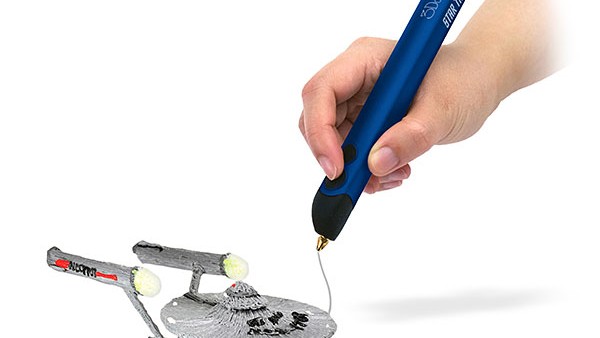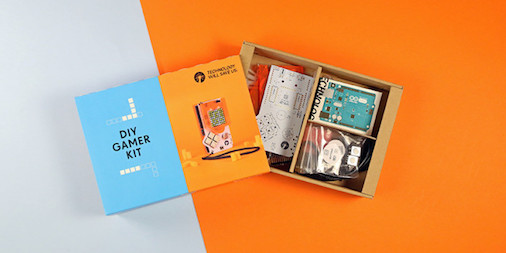There’s no need to be afraid to use technology in teaching! In fact, you should view it as an exciting time to provide innovative, fun and unique learning experiences. So don’t stress! Take a step back, slow it down and you’ll be wishing you adopted eLearning in your classroom earlier!
Slow It Down: Designing Optimal eLearning
When introducing new learning methods to today’s learners, who usually lie somewhere between tough to engage and tough to challenge, there are many different routes you can choose. Some of those are more effective than others. You must consider the number of students, whether they have similar learning backgrounds, and if they have comparable skill sets. Whatever the case may be, the end goal remains the same. Teachers need to work with the students in the classroom to create programs that positively impact their learning and improve with technology integration. The first step is recognizing and accepting that all learners learn in different ways. You may need custom teaching approaches sometimes and this could get complicated. One way to differentiate learning is to use formative assessment as a teaching tool.
By regularly interjecting with relevant questions every few minutes, this helps students revise and recall key facts or concepts. This also provides the opportunity for student-teacher communication, which encourages feedback, redoes and deeper understanding. Another useful technique is introducing kids to progress bars. What are those? Well, basically, they provide a visual representation of how well they fully understand material and where they need to be. When needing to complete their progress bars, children become more focused and excited. Being able to mark off a task as complete is very satisfying for them, especially when they can get creative in designing their personal progress bars however they’d like!
If those don’t work or students start craving something new, another approach to solidifying eLearning is to gamify it. By embracing our natural tendencies to want to compete, gamifying eLearning often increases student participation and deepens engagement. When learning transforms into a game, students will want to be a part of it! Finally, when students can receive some kind of tangible reward for their efforts, their motivation often skyrockets. Badges are a great way to do just that. They represent a sense of accomplishment for kids and serve as a great way to keep them motivated all year. Wanting to earn more badges, kids will try to keep improving. Plus, with the ability to share their success on social media, there’s no doubt they’ll be at their best! Try pairing EdTech with one of these strategies in your eLearning course and let us know how you liked it!
Try Something New—Learn With Robots
Technology—in any form—is generally much more beneficial in chasing the elusive quest for deeper learning. Many educators and districts have adopted this belief and implemented tools like iPads and Chromebooks into their classrooms for students to use in a 1:1 environment, but along with these useful technologies, there are others you probably wouldn't think of right away. The best example? Robots. Robots, while not very mainstream, provide a totally different and certainly innovative approach to learning and will get kids excited. Using these fun teaching tools will build interest and open up new forms of innovation.
Not only will young kids find it fun, teaching robotics in the early grades has learning benefits as well. Playing with and building robots helps kids learn the basics of programming and by being in control, they learn to follow precise instructions as well as experimenting with what the robot can and can't do. Plus, despite young children not noticing, learning through robotics also helps them develop important skills for modern-day jobs. The programming demand—whether for up-and-coming drones or some yet-to-be-established field—will likely be booming. By programming robots, students can discover interests or skills for tech-related careers and learn valuable skills anyway.
There are teaching-specific robots suitable for children of any age and those that cater to specific age levels as well. Some huge and some tiny, robots are great assistive tech tools, especially for children with learning difficulties. Kids tend to respond to and benefit from the calm, clear and consistent interactions that learning with robots can provide. One last benefit is the myths learning with robots help dispel. Kids often believe that robots are complex pieces of huge technology, whereas, in reality, they're often simplistic. Understanding what these tools can and cannot do is the best way to help kids understand and help prepare them for a future in which they will probably be seeing a lot of them.

Digital Tools Can Make For More Fun Assessments
Even with the shift to learning with technology, teachers still need to make sure their students are, in fact, learning. If retention levels and student engagement do not increase, then they’re likely not using their EdTech properly. The best way to gauge if students actually are learning is through quick assessments utilizing technology. The importance and frequency of assessment in education isn’t going to dwindle any time soon and, despite the advances in teaching technology, that’s probably for the best.
What you can do, however, is shift from traditional pencil-and-paper assessments to assessments that make us f digital learning tools. There are so many other ways that kids can show their comprehension levels and not only are the new ways more efficient, but they are also much more engaging and fun! Digital assessments can eliminate testing anxiety since those results usually make up a large portion of a student’s overall grade. Formative assessments, however, work in the opposite way—they're fun, flexible, informative and actually help with learning and retention. Digital tools can assess students in more ways than one. And, they provide teachers with immediate feedback—a much more efficient and enjoyable process.
You don’t have to ditch traditional tests and quizzes altogether, but having knowledge of a variety of different assessment methods will definitely come in handy. Not only will teachers save time on grading (awesome!), oftentimes, it is much easier to fully assess learning levels. One example of formative assessment is the use of Twitter. By simply having students tweet out what they learned that day and using it as an exit slip when they leave the room, teachers can gain valuable insights through the use of a modern technology tool. By providing students with a beneficial use for something many of them already use daily, they win and you win. And that’s what you really want.
EdTech’s Wide-Reaching Influence
The potential exists for technology tools to drastically change education in the United States—just waiting for educators to make the first move. Kids can accomplish so much and hone so many skills when they have access to learning with educational technology as opposed to traditional methods of study. It just has to become a priority. Even something so small as an iPad or, in some cases, even an iPhone can provide students with innovative ways of thinking, help them generate new ideas and foster a sense of collaboration they have never felt before. As has been said many times, mLearning is quickly becoming ubiquitous in education.
While EdTech products, like tablets, go a long way in supplementing traditional learning approaches, they are not the total package, but the role that they play in today’s education should not be overlooked. Many factors influence a child’s ability to learn effectively and, according to research, exactly zero of these things are “technology.” Don’t tune out just yet, however, and let us explain. The top factors that influence a child’s ability to learn, according to John Hattie, include feedback, cognitive ability, instructional quality, direct instruction, class environment, challenge of goals and peer tutoring among others. As promised, none of the above is "technology."
So, why are so many people (including us) tirelessly pushing for the total adaptation of educational technologies into every classroom in the country? The answer is quite simple actually. While EdTech does not completely accomplish any of the goals listed in the previous paragraph, it absolutely does enable them. Feedback, for example, can be given instantaneously on a mobile device through a Web-based program. Instructional quality can be bolstered through the use of informative graphics or engaging videos. Class environments can be brought alive with any number of modern technologies. The list goes on and on. So, while picking up a piece of technology and attempting to become a genius might not work out too well, using EdTech to enhance the influence that certain aspects of learning have on kids absolutely does.

Move Past The Excuses—Start Teaching With Tech
We’ve heard them time and time again. Excuses. Teachers have many reasons for why they don’t want to waste time with new technology in their teaching practices. Unfortunately for them, however, it’s now easier than ever to do so. Collaborative resources are available creativity-boosting technology is available and academic discounts are possible to help make transitions that much easier. So, what’s the excuse now?
One of the most important things to do is understand what your strengths are as a teacher and work to take advantage of them. One of those strengths is the intuitive ability to immediately recognize what is working and what is not. Determining which EdTech tools will work best for your specific set of students is not something that should be overlooked. Once you know what you’re good at, take some time to reflect on areas in which you could use improvement. Acquiring specific knowledge about how tech products work, what kinds of projects can be done with them and how they will enhance learning will go a long way in providing a lasting learning experience as well as convincing parents that teaching with technology is not a waste of time. Technical skills are one area to focus on as well as improving collaboration and context skills as well.
Preparation is good, but you can’t prepare forever, so just start! There are so many opportunities to become a tech-using teacher, so deciding which EdTech equipment you want to try first may just be the hardest part. Determine what problem you are looking to solve (could be real or made up) and then start passing out technologies that will help students come up with a solution. The more you try to solve problems through the creative use of technology, the more comfortable you will get with using it and that will have an effect on students as well. Remember, there are virtually no limits to teaching with technology. It can be used in the classroom, outside or in a collaborative makerspace. You just have to take the first step.



